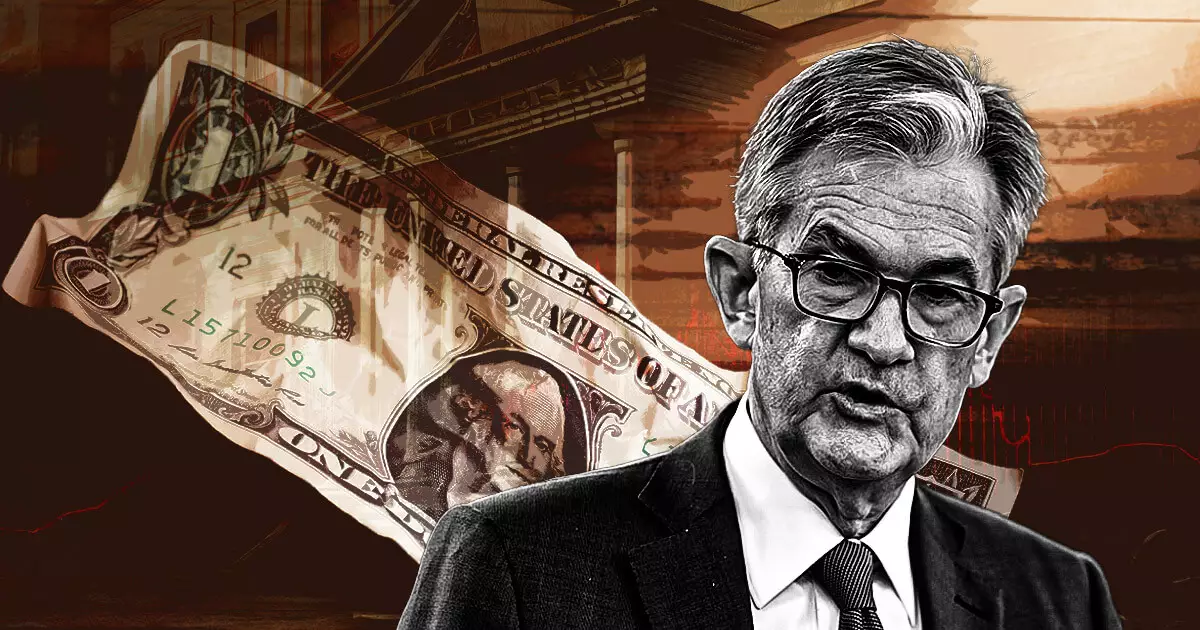In recent years, stablecoins have emerged as a cornerstone of the cryptocurrency ecosystem, enabling seamless transactions and offering a degree of price stability that other cryptocurrencies lack. As Federal Reserve Chair Jerome Powell noted in his address at The Economic Club of Chicago, the need for a regulatory framework surrounding stablecoins is becoming increasingly urgent. With their usage for payments and digital settlements skyrocketing—last year alone seeing transfer volumes eclipsing $14 trillion—the demand for regulatory clarity is not merely a bureaucratic necessity but an essential step toward harnessing the transformative potential of these digital instruments.
Stablecoins’ appeal lies in their dual nature; they serve both as the foundation for financial innovation and as a tool for improving the efficiency of traditional banking services. However, without proper oversight, their integration into the financial fabric risks introducing systemic vulnerabilities. Powell’s acknowledgment of this duality presents an encouraging viewpoint for those in the center-right political spectrum, advocating for a balanced approach that fosters innovation while maintaining financial stability.
The Shifting Regulatory Landscape
Historically, the regulatory climate surrounding cryptocurrencies has been fraught with uncertainty. Powell’s recent remarks signal a shift, demonstrating Congress’s newfound eagerness to formalize legislation governing stablecoins. There is a palpable change in the environment where lawmakers—once hesitant—are now recognizing the necessity for a structured approach to digital assets. Powell’s optimism about the trend marks a crucial turning point; it reflects not merely a fiscal strategy but also a cultural shift toward innovation in the financial industry.
The legislative proposals currently circulating, such as the GENIUS Act and the STABLE Act, represent critical steps toward establishing a cohesive framework for stablecoins. These measures, despite facing challenges, could unify disparate regulatory approaches and enhance consumers’ protection by ensuring transparency in digital asset transactions, ultimately setting a standard for responsible use.
Balancing Innovation and Consumer Protection
The tension between fostering technological advancements and ensuring consumer safety is a delicate dance. Powell’s commitment to not sever banking access for federally compliant digital asset firms is commendable, allowing the banking sector to adapt alongside technological evolution. This openness is essential for responsible innovation, particularly when integrating stablecoins into traditional banking.
Consumer protection should not be seen as an impediment but as a prerequisite for fostering growth. A hasty or harsh regulatory regime can stifle progress, driving innovators offshore to less stringent environments. By advocating for an ecosystem that encourages market participation while instituting vital consumer safeguards, Powell positions the Federal Reserve as a supportive partner rather than an adversary to technological advancement.
The Role of Traditional Institutions
While Powell maintains that the bar for banking engagement with cryptocurrency remains high, he also espouses a more lenient, accommodating stance toward responsible innovation. This indicates a clear understanding of the evolving nature of financial transactions in the digital age. By allowing banks to offer services like crypto custody, traditional financial institutions will have the opportunity to create new revenue streams and better serve their clients.
The integration of stablecoins into the services offered by banks may ultimately lead to a hybrid financial ecosystem, where traditional institutions and digital assets coexist. This symbiotic relationship could enhance the overall efficiency of the financial system, fostering competition and ultimately benefitting consumers through better services and lower costs.
Global Engagement and Financial Stability
Powell’s insights into the regulatory complexities surrounding digital asset integration underscore the importance of collaborative global approaches. As stablecoins continue to infiltrate international markets, the need for comprehensive oversight is urgent. Failure to establish a cohesive regulatory framework could result in fragmented approaches across jurisdictions, creating vulnerabilities that could be exploited by bad actors.
In maintaining an open dialogue with international regulators and engaging with other countries on digital asset policy, the U.S. can play a critical role in shaping global standards. Establishing leadership in this space would not only protect domestic financial systems but also ensure that American innovation retains its competitive edge on the world stage.
By carefully navigating the intricate landscape of stablecoins and advocating for a balanced regulatory framework, Powell, along with supportive lawmakers, can steer the financial industry toward a future defined not by ambiguity and fear, but by opportunity and responsible innovation.


Leave a Reply